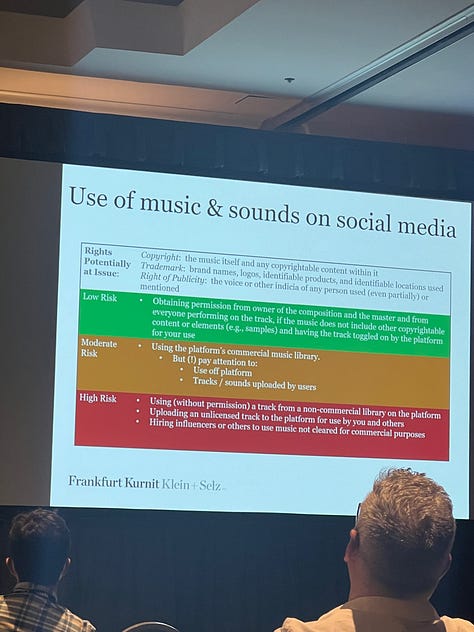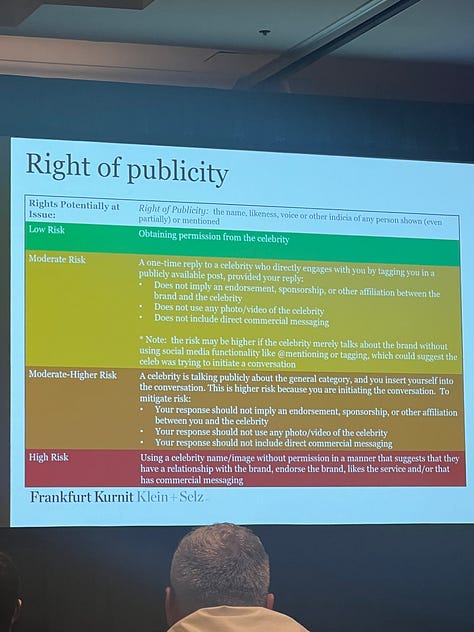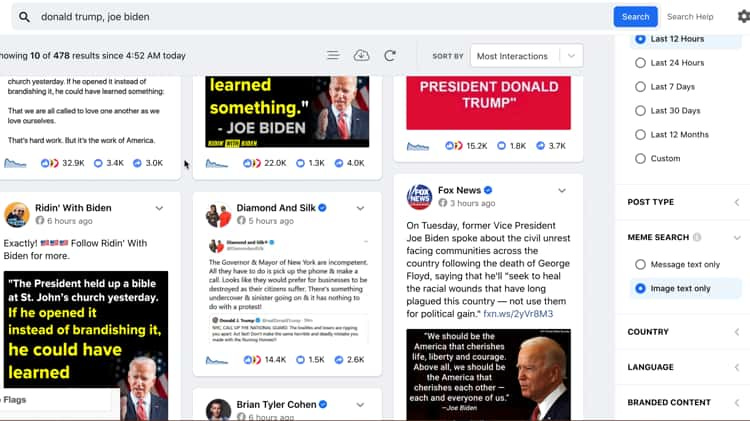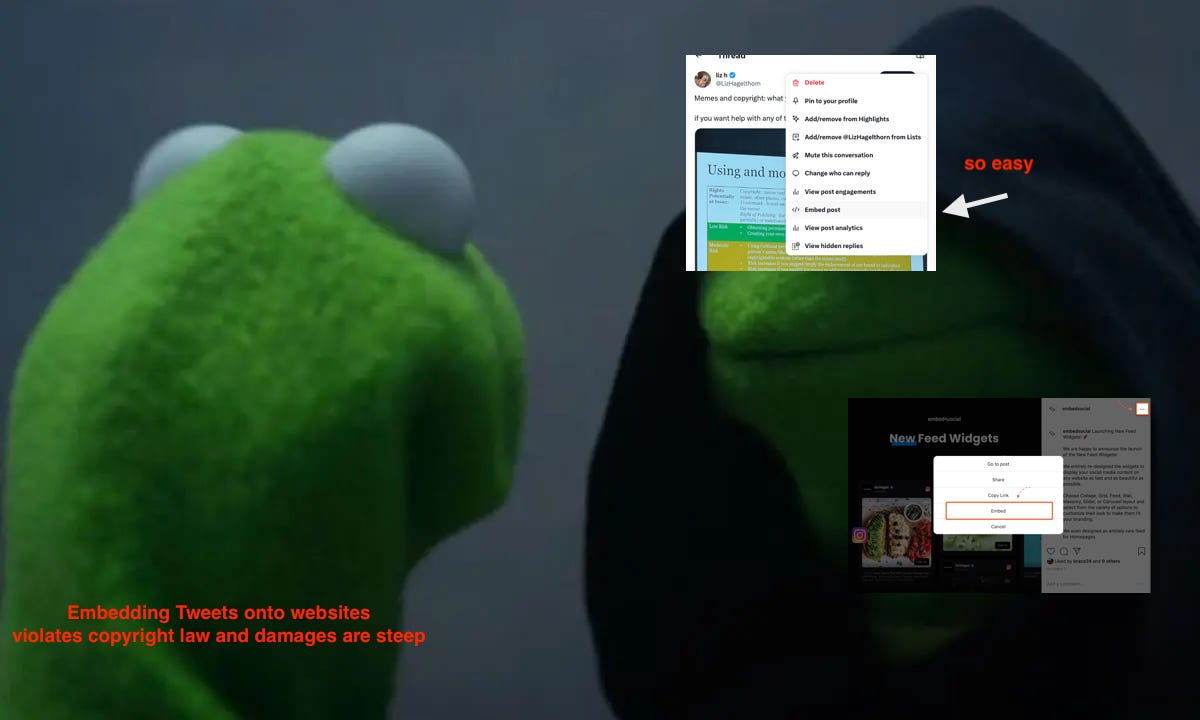Creative Revolution: AI, Copyright Law, and the New Era of Digital Artistry
This article navigates the transformative impact of AI on the creative industry, examining the evolving legal landscapes and the new challenges and opportunities they present for digital artistry.
In this article, I share my insights as a meme maker and founder of SmarterLicense, exploring the intersection of creativity, commerce, and technology with a focus on AI's impact in these realms. I reflect on my experiences and learnings from the Copyright Society Midwinter 2024 Meeting, where I gained valuable perspectives on copyright, artistry, and AI. This piece delves into the challenges and opportunities presented by AI in the digital world, emphasizing the importance of proactive digital rights management on social media and the evolving legal landscape. I discuss the critical role of AI in shaping content creation and highlight the necessity of innovative platforms like SmarterLicense for managing and monetizing creative works. Additionally, I explore the emerging significance of datasets in AI development, underscoring how they are becoming the new canvas for creatives and the need for solutions that protect their rights and ensure proper usage.
For the better part of my career, and indeed much of my life, I have found myself at the vibrant crossroads where creativity, commerce, and technology converge. As a meme maker, I've reveled in the art of remixing and setting the stage for others to re-imagine content, adding their unique twist to my creative meme formats.
My creative pursuits are my livelihood, where virality gives value, but unfortunately virality doesn’t pay bills. My work requires balancing the act of freely sharing ideas with the necessity of making a living. My deep-seated experience in social media has afforded me a unique vantage point to observe and participate in this ever-evolving space.
My platform, SmarterLicense, is a manifestation of this balance, a platform where monetization, licensing and creative works are the cornerstone of innovative tools that work with our existing web. The inception of SmarterLicense embodies my dedication to navigating the complexities introduced by digital and social media advancements. I’m blessed to work on technological innovations that represent a holistic approach to reshaping the exchange, utilization, and monetization of creative works in the digital realm.
From viral growth strategies to leading creative for pseudonymous networks, my journey has been one of constant learning and adaptation. As AI becomes an increasingly integral part of our digital ecosystem, I've dedicated my focus to addressing the challenges it presents, especially in studying the incentives and identifying the next creative frontiers.
Insights from the Copyright Society Midwinter Meeting
Recently, I attended the Copyright Society Midwinter 2024 Meeting. This gathering was a convergence of some of the most brilliant legal minds grappling with the intertwined realms of copyright, artistry, and artificial intelligence (AI).
Although I found the weekend incredibly valuable and informative, I discovered that there are many existing problems in this space. My startup, SmarterLicense, has become my medium for solving these problems. In this piece, I want to explain some of what I learned, outstanding issues that remain unaddressed, and the ways that code can solve some of the thorniest difficulties regarding content creation, IP rights, and AI.
Among the highlights was my artwork, "Wizard of Palm Springs," created using my original photo and Adobe Firefly, won the AI Art Contest! I created this piece to pose the question: "In an age where AI and open-source tools are used with an original photograph I took, where do the boundaries of infringement lie?"
To license this piece, simply visit my SmarterLicense listing.
The event was an enlightening melting pot of ideas at the intersection of art, technology, and law. Key discussions included panels like "Navigating the Legal Pitfalls of Social Media," featuring experts Shannon Green, Global General Counsel, Anomaly, Hannah E. Taylor, Partner, Frankfurt Kurnit Klein & Selz and Maddy Batliboi, Global Head of Music Legal, Meta. They delved into the evolving challenges their clients face on social media and highlighted the critical need for adaptable, informed strategies in our rapidly shifting technological landscape. My takeaway from their talk is that a lot of these patterns are the same ones that we see in trying to solve the problems raised by AI and media.
Here are some of the takeaways and common legal risks I see brands and buyers get in trouble legally and financially:



During the conference, these slides served as visual anchors for the rich discussions, providing attendees with tangible takeaways to apply in their practices.
As I reflect on the panels and the exchanges of ideas around social media, there’s a lot of practical wisdom for navigating the copyright terrain in a new AI-driven world.
Enhancing Digital Rights Management: The Need for Proactive Search Tools from Social Media Platforms
As highlighted in the panel, the management and protection of intellectual property (IP) on social media platforms are paramount. The discussions at the Copyright Society Midwinter Meeting, particularly with Meta's presence on the panel, highlighted a glaring omission in the current digital rights management (DRM) ecosystem despite having tools like CrowdTangle already built. Specifically, to allow rights holders and their legal teams to efficiently search for their marks across platforms such as Instagram and Facebook. This deficiency underscores a critical need for social media giants to either harness the potential of existing tools more effectively or innovate new solutions tailored to meet the unique requirements of rights holders.
source: CrowdTangle Screenshot
The Critical Gap in Current DRM Practices
The absence of a recommended, dedicated system for IP search and management significantly hinders rights holders' ability to safeguard their intellectual property. This challenge leaves rights holders in a reactive stance, scrambling to identify and address infringements after they've occurred rather than preventing them proactively.
The Urgent Need for a Proactive DRM Approach
The digital era demands a DRM strategy from major social media and content platforms that is both proactive and automated, offering rights holders the tools necessary to monitor their IP comprehensively and take swift action against potential infringements.
This approach should ideally include:
Automated Monitoring: Utilizing advanced algorithms and machine learning to scan social media platforms for specific trademarks, logos, and copyrighted materials, providing real-time alerts to rightsholders.
Efficient IP Search and Management: A feature within social media ecosystems that allows for efficient search and export of intellectual property marks, facilitating easier tracking and enforcement.
Collaborative DRM Solutions: Encouraging collaboration between social media platforms and IP management solutions to create a more integrated and effective DRM system that is interoperable across each platform.
A Call for Innovation and Collaboration
By developing and implementing systems that allow for efficient IP search and management, social media and content distribution platforms can significantly enhance the ability of rights holders to protect their intellectual property, fostering a digital environment that respects and upholds the rights of creators and innovators. Rights Holders and their legal teams must continue to demand this. After all, without content, platforms are empty. Creators should use their leverage to require platforms to support their rights.
Navigating Copyright Law vs. Platform Tools Empowering Massive Infringement
The less ownership you have in a file, the higher the risk and the greater the need for a proper license, regardless of the type of creative work involved or the distribution method. This principle has been a cornerstone of copyright law, which has evolved to offer solutions for various media types through the development of technology and platforms.
A crucial point underscored by the speakers was the divergence between copyright law, which governs usage, and the platforms' terms, products, and features that sometimes facilitate mass infringement. A prime example of this is the use of "embeddings" on social media platforms.
Case Example: Justin Goldman v. Breibart News Network, LLC et. al.
A famous instance highlighting the “Twitter embed” issue is the 2016 case of Justin Goldman v. Breitbart News Network.
Background: Goldman took a photograph of Tom Brady and Danny Ainge, which he posted on Snapchat. The image quickly went viral including across Twitter/X.
Infringement Issue: Several online publications, including Breibart and The Boston Globe embedded tweets containing Goldman’s photo in their news stories without his permission.
Court's Ruling: The judge ruled in Goldman’s favor based on two important points:
The substantial nature of Goldman's picture that had been taken.
The failure of the publications to license the image through standard copyright methods.
The case highlights the complexities of copyright law vs. platform tools. Platforms have embedding or “share to story” features that actively enable widespread copyright infringement. In addition to the Goldman case where infringement happened via Twitter’s embedding feature, each platform has their own copyright landmines. There are countless cases where on Instagram, brands share creator content to their stories featuring commercial music overlays and get sued. There is a gap between the legal framework governing copyright and the mechanisms provided by social media platforms do not align with traditional copyright norms. It’s very difficult to bring claims against platforms for any of this and it’s up to users and advertisers to protect themselves.
Re-examining “Commercial Use” in the age of AI and Social Media
In the realm of social media, 'commerciality' carries weighty legal implications, exemplified by the recent Midwinter Meeting's focus on copyright law. The discussions were punctuated by the Supreme Court's decision in Andy Warhol Foundation for the Visual Arts, Inc. v. Goldsmith, a case that probes the boundaries of copyright and fair use in the context of artistic transformation and commercial intent.
Here are the critical takeaways from the ruling:
Infringement of Copyright: The Supreme Court's decision confirms that one of Warhol's works, derived from Lynn Goldsmith's photograph of Prince, was not protected under "fair use" because it infringed upon Goldsmith's copyright.
Commercial Purpose: Justice Sonia Sotomayor's majority opinion highlighted that both Goldman’s photograph and Warhol’s variation served commercial purposes in portraying Prince, which aligns them more with copyright infringement than fair use.
Purpose and Character: The ruling suggests that if the secondary work's purpose and character had been distinctly different from the original, the decision might have come out differently, indicating that visual variation alone does not exempt a work from copyright concerns if it fulfills a similar commercial function.
Impact on Artistic Expression: Justice Elena Kagan's dissent cautions that this interpretation of fair use could inhibit artistic creativity, as it narrows the scope for artists to draw from existing works without seeking permission.
The Supreme Court’s Warhol opinion seems miles away from the very real problems raised by internet content and the growth of AI. The isolated one-to-one comparison conducted by the Court assumes a business model that allows for a single image to be featured on the cover of a magazine, or as a page accompanying an article inside. The economic context of online creators bears little–if any–resemblance to this. It is extraordinarily difficult to use Warhol as a source of usable rules to govern online infringement because its perspective is founded on a business model that appears long ago and far away.
Commercial Interests in the Creator Economy
First, the concept of a static image for editorial use as a point of comparison is nonsensical in the so-called Creator Economy. Each creator operates as a source of content over time operating within a reputation economy that builds up an engaged audience. The commercial realm in the virtual space is entirely different. For example, a creator who posts ten times per day provides a mix of sponsored and non-sponsored posts. The balance of ads vs. organic content is the same as the platforms themselves. Generally, nonsponsored posts have no monetization attached. Sponsored posts do, sometimes because they are paid for by a brand or the creator has found another way to monetize the posts on the platform. In the vast majority of cases, nonsponsored posts have highly engaging content and are usually the reasons that subscribers engage. At the same time, a timeline of completely sponsored posts quickly dies. No one wants to see 100% ads.
Once content creators learn which of their posts get the most views, they tailor later posts to match those algorithmic preferences to maximize reach, subscribers, and income. If a platform’s algorithm is prioritizing a particular type of sound, look, provocative language, or the like, creators pick up on those preferences and follow suit. In this way, the content creator’s conduct is inherently commercial because it is heavily influenced by the platform’s preferences. These considerations are entirely absent from the economic underpinning in the Warhol case.
In addition, the pure demand of volume of content required by platforms is impossible for a single content creator to meet day by day and grow a sustainable business from. To meet the posting standards of dominant social media platforms, users will inevitably infringe in the way they engage with, react to or create from copyrighted works that may be trending at any given time.
The successful creator, one who is building their audience in a reputation economy– monetizes their account by providing a mix of both sponsored and nonsponsored posts, balancing the two to maximize their reach. Thus, it makes little sense to say that a nonsponsored post is noncommercial. At the end of the day, all of the creator’s posts are commercial. All posts generated by a creator who wishes to earn are commercial.
Second, this underscores the symbiotic relationship between content creators and platforms. Platforms are, by their nature, commercial entities. They earn money in various ways, some pay out money to creators like YouTube’s AdSense program. Platforms dictate the pace and type of content that will be prioritized to viewers. Platforms themselves are profiting from both types of content, sponsored and non-sponsored, using organic user generated content to offset advertisements run through their platform. In a similar way a creator may monetize their page, platforms are monetizing their platform by serving advertisements within the organic “non-monetized” content without cutting in any creator.
Platforms are directly monetizing any infringement that’s happening on their platform. The idea of fair use goes out the door because platforms are monetizing this content and if we take the Warhol judgment seriously, this is extremely problematic for the platforms since they are making commerce from any infringement that happens on them. However, platforms have protection under the DMCA and if the infringed rightsholder files a complaint, platforms have to follow a take-down process. However, rightsholders must find the infringement first because nobody can file on their behalf with the platforms.
Given this, I propose the following points should be under consideration in the era of social media:
Platforms as Enablers of Monetization: Social media platforms have evolved from mere conduits to active enablers of monetization, suggesting that any activity on these platforms is implicitly commercial.
The 'Creator' Economy: The term 'Creator' blurs the lines between personal expression and commercial enterprise, propelling users to exploit their content and followers for financial gain within this economy.
Off-Platform Economic Impact: The value attributed to followers and reputation on social media bestows an economic dimension to interactions, hinting at an inherent commercial motive behind such engagements.
Legal Ambiguity and the Creator Economy: The burgeoning Creator Economy necessitates a reevaluation of the current copyright law, seeking clarity and certainty while personal and commercial content creation increasingly converge.
The legal ecosystem must evolve alongside the digital environment, especially as the creator economy reshapes the landscape of copyright. Creators, platforms, and legal professionals must work together to navigate this intricate terrain, ensuring that copyright laws remain relevant and accommodating in the age of AI and the expanding creator economy.
Implementing Solutions
Reflecting on these discussions, it becomes evident how SmarterLicense will play a transformative role in addressing these copyright challenges. SmarterLicense’s legal frameworks provide a much-needed flexible framework in an environment where creative works are extensively used in AI and machine learning.






